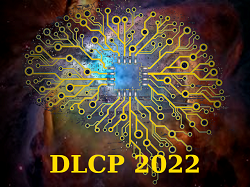Speakers
Description
During the experiment, 9 water bodies located in the Pskov region were studied: the pond of the Mirozhka River, the delta of the Velikaya River, the Kamenka River, lakes Kalatskoye, Teploe, Lesitskoye, Tiglitsy, Chudskoye (Peipsi), Pskovskoye. Water samples with phytoplankton were taken from each water body, and toxicants (CdSO$_4$ or K$_2$Cr$_2$O$_7$) were added at a concentration of 20 μM and 50 μM. These samples (together with control samples without toxicant addition) were incubated for several days. The chlorophyll fluorescence transients (OJIP-curves) were recorded using AquaPen–C 100 (Photon System Instruments, Czech Republic) fluorometer at actinic light intensity of 1000 µmol photons/m$^2$/s and wavelength of 650 nm every 3–5 hours of incubation (with breaks for the night). 465 fluorescence induction curves were obtained, for each of which 16 JIP test parameters (V$_J$, V$_I$, ABS/RC, ET$_0$/RC, TR$_0$/RC, DI$_0$/RC, S$_m$, S$_s$, M$_0$, N, $\Phi_Po$, $\Phi_Eo$, $\Phi_Dо$, $\Phi_Pav$, $\Psi_0$, PI$_{ABS}$). The resulting dataset was analyzed using the Python programming language. Cluster analysis together with data dimension reduction methods (PCA, t-SNE, UMAP) made it possible to put forward a hypothesis about the presence among the considered water bodies of 2 groups, the phytoplankton of which differ in the dynamics of resistance to the toxic effects of heavy metals. Machine learning methods have made it possible to identify the forms of induction curves typical for each type of water bodies and the dynamics of their change during toxic exposure. To reveal the biophysical mechanisms associated with such a different reaction, it is necessary to analyze the shape of the induction curves using mathematical models based on the ideas about the structure of the photosynthetic electron transport chain.
This research was carried out as part of the Scientific Project of the State Order of the Government of Russian Federation to Lomonosov Moscow State University No. 121032500060-0 with partial support by the Russian Science Foundation (projects 20-64-46018 and 22-11-00009).
| Agreement to place | Participants agree to post their abstracts and presentations online at the workshop website. All materials will be placed in the form in which they were provided by the authors |
|---|

